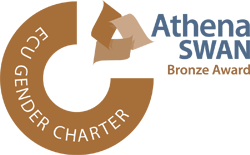FIRST WITCH Look what I have.
SECOND WITCH Show me, show me.
FIRST WITCH Here I have a pilot’s thumb,
Wrecked as homeward he did come.
Drum within
THIRD WITCH A drum, a drum.
Macbeth doth come.
ALL WITCHES The weyard sisters, hand in hand,
Posters of the sea and land,
Thus do go about, about,
Thrice to thine, and thrice to mine,
And thrice again, to make up nine.
Peace, the charm’s wound up. (1.3.22-32)
Almost casual, this bit of show and tell: look what I have! Gleeful, boastful; a souvenir, a trophy: here I have a pilot’s thumb, wrecked as homeward he did come. A pilot like the master of the Tiger—they’ve done such things before, then—his thumb—torn away by the violence of the tiller’s movement in his hand, as he tried in vain to steer the ship through the storm? removed from his body, after the wreck of his ship? The Folio has wrackt, which is cognate with wreck, but also has the sense of ruin, destroy, as in wrack and ruin; in another sense it can mean to revenge. And if it’s pronounced wracked, rather than wrecked, then racked is also there, in the sense of being torn apart by torture; especially current post Gunpowder Plot. No time for much reaction to the triumphantly (or indeed casually) produced thumb, however: a drum. Someone is coming. The soundscape of the storm, the thunder and lightning, is augmented by a sound created by human agency. Unlikely that a drummer will appear—there isn’t an army coming—but things are about to develop and change. A drum, a drum. Macbeth doth come. They’ve been waiting for this, just—killing time. So a charm, affirming their identity, their alliance together, and their power. They are the weyard sisters, the weird sisters, the wayward sisters, the wyrd sisters. Agents of fate, that last epithet makes them. They dance, hand in hand; they are posters of the sea and land, moving at speed, posting on water as much as on dry land. They go about, about, circling in their ring, changing direction, to thine, to mine; they perform nine rotations. All the while, the drum? Perhaps. But, peace, the charm’s wound up. That’s done it. Wound up, as concluded, ready to go. But also in the sense (one which will return in this play) of the tightened string, the coiled spring. The rack, the pilot’s thumb. The wheels turn.

